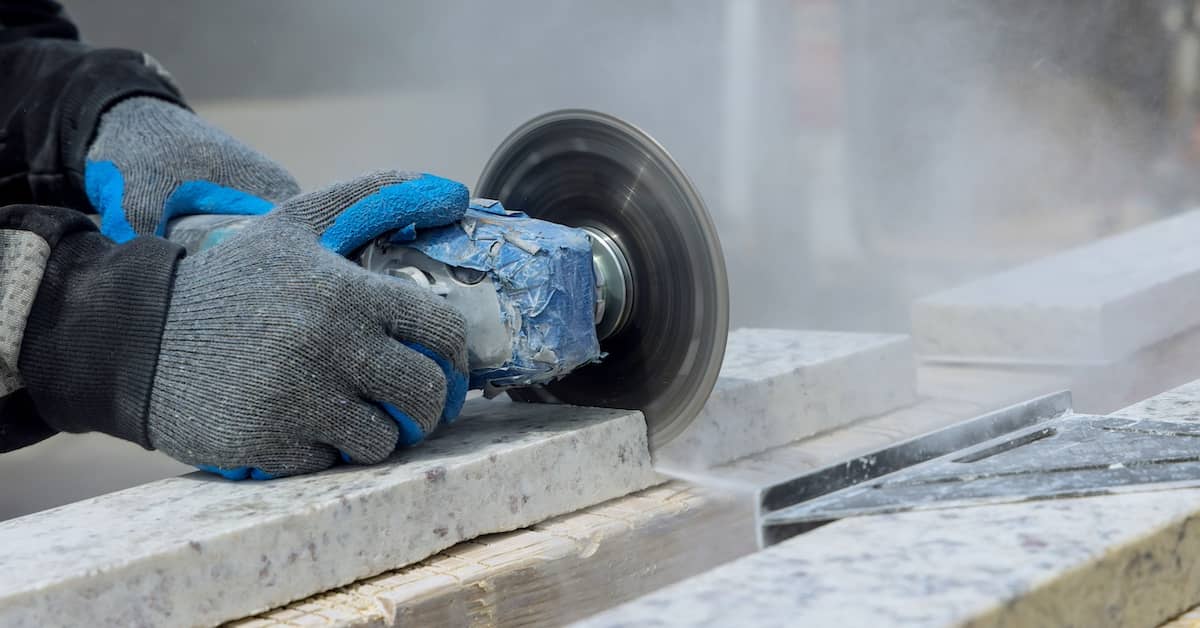
Workers exposed to deadly dust in the workplace may have a claim for WorkCover compensation. For centuries, different types of deadly dust have been a concern across multiple industries. While the latest headlines focus on the danger of crystalline silica dust from engineered stone, there are a number of other occupations where dust represents a major health hazard.
In 2022, both lung cancer with silicosis and scleroderma with silicosis were listed as ‘proclaimed diseases’ by WorkSafe. Workers afflicted with a ‘proclaimed disease’ face fewer burdens in claiming compensation. But these are not the only deadly dust diseases for which workers may have a claim.
Henry Carus + Associates have been closely following the tragic news about young tradies developing silicosis after working with engineered stone. We have an in-depth knowledge of the dust hazards found in multiple industries, as well as deep expertise in WorkCover claims.
Call 03 9001 1318 today for a FREE, no-obligation consultation. Our WorkCover lawyers serve clients in Melbourne and throughout VIC.
What Is the Deadly Dust Disease?
There are actually several diseases (known as pneumoconioses) workers may develop as a result of occupational dust exposure. Microscopic particles in the dust can damage the lungs when inhaled, creating scar tissue that makes breathing more difficult.
Examples of work-related dust diseases include:
- Silicosis
– Caused by inhaling silica dust. - Asbestosis
– Caused by exposure to asbestos fibres. - Coal workers’ pneumoconiosis
– Also called ‘black lung disease’; caused by the inhalation of coal dust. - Aluminosis
– Caused by the inhalation of aluminium dust. - Hypersensitivity pneumonitis
– Caused by exposure to organic dust, such as mould, bird droppings, and certain types of agricultural dust. - Byssinosis
– Occurs when certain plant fibres—including cotton, flax, and hemp—are inhaled. - Talcosis
– Caused by prolonged exposure to talc dust. - Berylliosis
– Associated with exposure to beryllium dust or fumes. - Hard metal pneumoconiosis
– Caused by exposure to dust produced by hard metals like tungsten carbide and cobalt.
Unfortunately, there is no cure for the conditions listed above. In severe cases, they can prove deadly.
What Are the Symptoms of a Dust Disease?
Exposure to deadly dust can occur in many types of workplaces. Although the source of pneumoconiosis may vary, dust diseases share many of the same symptoms. These generally include:
- Chronic cough
- Shortness of breath
- Chest pain and tightness
- Breathing difficulties
- Fatigue
If you are experiencing these symptoms and you have a job where hazardous dust is present, you should make an appointment with your GP straight away. Scarring of the lungs is irreversible, but early intervention can make the symptoms more manageable.
What Does WorkCover Pay For?
You may be entitled to the following WorkCover benefits if you have been diagnosed with a dust disease related to your occupation:
- Coverage of medical treatment expenses: WorkCover will pay for the ‘reasonable costs of approved services’ for treatment of the condition. Some services may be accessed without referral from a WorkSafe agent, while others require prior authorisation.
- Weekly payments: If you are unable to work, WorkCover will pay a percentage of your weekly wages. The percentage varies from 95% in the first 13 weeks to 80% thereafter.
- Provisional payments: Living with a dust disease can have serious psychological as well as physical repercussions. If you claim mental injury, WorkCover makes provisional payments for mental health services. Provisional payments are available while your claim is being reviewed—and even if it is rejected—for up to 13 weeks.
- Permanent impairment benefit: If your condition makes it so you are no longer able to work, you may qualify for WorkCover’s permanent impairment benefit. You will need to undergo a specialised medical assessment to determine if you meet the threshold for permanent disability.
- Superannuation payments: After receiving weekly payments for a full year (52 weeks), you may be eligible for contributions to your super fund.
Dependants of a deceased worker (such as partners and children) have certain entitlements if a worker dies as a result of deadly dust exposure. WorkCover will pay for medical and like services, funeral expenses, counselling for surviving loved ones, and the cost of travel and accommodations for family members who have to travel more than 100km for the funeral. Dependent partners and children may also be entitled to a lump sum payment and/or weekly pensions to make up for the loss of the worker’s income.
You may be entitled to substantial compensation from WorkCover if you or someone you love developed a dust disease on the job. It is important to consult a specialist lawyer as soon as possible to ensure that you claim all of the entitlements you and your family are due.
Additional Entitlements for Workers Exposed to Crystalline Silica
University researchers estimate that more than half a million Australians are exposed to deadly silica dust in the course of their jobs. The popularity of engineered stone (commonly used in kitchen and bathroom benchtops) has led to a dramatic spike in silicosis, lung cancer, and related diseases among workers involved in the cutting, grinding, polishing, and installation of materials containing crystalline silica.
Starting 1 July 2024, Australia will become the first country in the world to ban engineered stone. While this decision will surely save lives in the future, what about the workers who are currently sick or even died after breathing in silica dust?
Recognising the toll silica dust takes on stonemasons’ health and well-being, WorkSafe Victoria offers a number of additional resources specifically for those suffering from diseases caused by inhaling this deadly dust. These include:
- Mental health support
- Specialised health assessments through the Alfred Occupational Respiratory Clinic
- Occupational rehabilitation
WorkSafe has also instituted additional duties for employers to reduce the risk of silica dust exposure, including safety practices and licence requirements. If your employer was negligent in implementing safe practices or did not hold an engineered stone licence prior to the ban, you may have a claim for common law damages.
Read More: Can I Sue for a Work-Related Injury?
Before manufacturing and supplying engineered stone is banned later this year (1 July 2024), manufacturers and suppliers are responsible for providing information about products containing crystalline silica and dealing only with persons who hold an engineered stone licence. Defective product claims may be brought against manufacturers and suppliers who fail in these duties.
Start Exploring Your Legal Options
Being diagnosed with silicosis or another dust disease can be overwhelming. Henry Carus + Associates can determine if you are entitled to WorkCover.
You Deserve More. Our team will provide you with compassionate support while aggressively pursuing all of the benefits and other compensation that may be available.
 Call Us Today
Call Us Today



